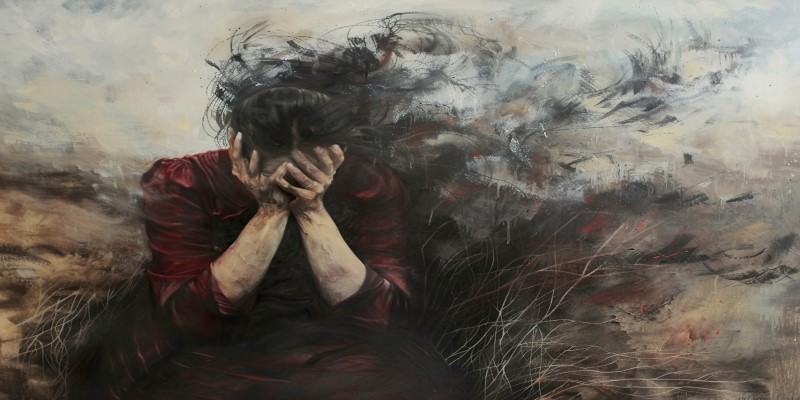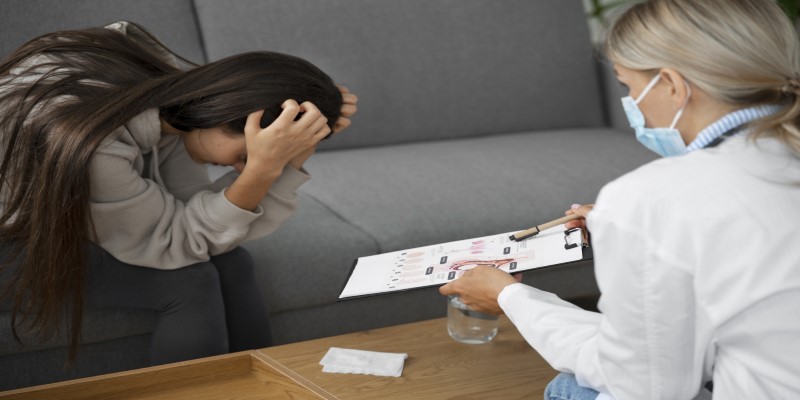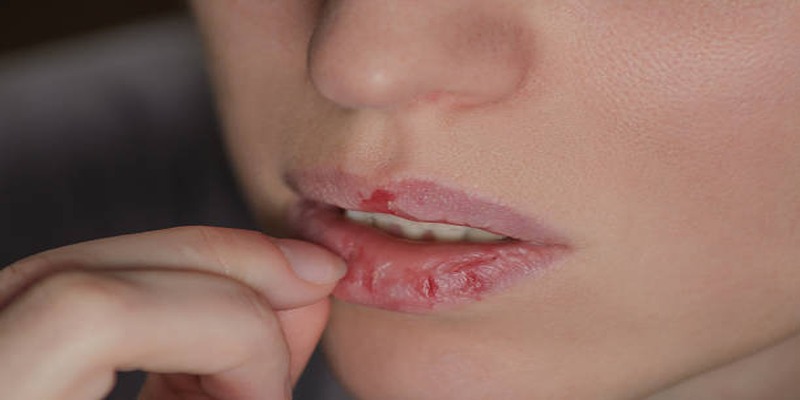Key Insights into 4 Common Types of Psychotic Disorders
Sep 05, 2024 By Kristina Cappetta
Psychotic disorders represent some of the most severe mental health conditions, often marked by significant disruptions in thoughts, emotions, and behavior. These disorders blur the line between reality and delusions, making it difficult for individuals to distinguish between what is real and what isnt. With millions of people affected globally, understanding the various types of psychotic disorders is crucial for early diagnosis and effective treatment. In this article, well delve into the definition of psychotic disorders, explore the four most common types, and discuss the implications of these conditions on individuals and their families.
What Are Psychotic Disorders?
Psychotic disorders are severe mental health conditions characterized by a disconnection from reality. People suffering from these disorders often experience hallucinations, delusions, and distorted thinking patterns. Psychosis can manifest as seeing or hearing things that arent there (hallucinations) or holding on to false beliefs even when evidence contradicts them (delusions). The onset of these symptoms can be sudden or gradual, depending on the underlying cause, which may be genetic, environmental, or related to substance use. Psychotic disorders, if untreated, can severely impact a persons daily life, relationships, and ability to function.
While psychosis is a symptom of several mental health issues, psychotic disorders are those where psychosis is the primary or core characteristic. Among these, four specific disorders are the most commonly diagnosed and studied.
4 Types of Common Psychotic Disorders
Here are four common types of psychotic disorders:
Schizophrenia
Schizophrenia is perhaps the most well-known psychotic disorder and typically appears in early adulthood, although symptoms can emerge in late adolescence. It is a chronic and severe mental health condition characterized by profound disruptions in thought processes, perceptions, emotional responsiveness, and social interactions.

People with schizophrenia often experience a combination of symptoms, including hallucinations (usually auditory), delusions, disorganized speech, and cognitive impairment. For example, a person might hear voices that others cannot hear or believe they have special powers or are being persecuted. Schizophrenia also affects a persons emotional responses, leading to a flat or blunted affect, where the person seems emotionally detached.
The condition is long-lasting and usually requires lifelong treatment, often combining antipsychotic medications with psychotherapy. Despite common misconceptions, with the right treatment and support, many individuals with schizophrenia can lead fulfilling lives.
Schizoaffective Disorder
Schizoaffective disorder is often seen as a blend between schizophrenia and mood disorders like depression or bipolar disorder. In this condition, psychotic symptoms such as hallucinations and delusions occur alongside mood disorder symptoms like severe depression or manic episodes.
There are two primary types of schizoaffective disorder: bipolar type, which includes episodes of mania and depression, and depressive type, which involves only depressive episodes. The psychotic symptoms of schizoaffective disorder are similar to those seen in schizophrenia, but they are coupled with significant mood disturbances, making this condition uniquely challenging to diagnose and treat.
Treatment for schizoaffective disorder typically involves a combination of antipsychotic medications, mood stabilizers, and therapy. The goal is to manage both the psychotic and mood-related symptoms, helping individuals achieve stability and maintain their quality of life.
Delusional Disorder
Delusional disorder is characterized by persistent delusions without the other prominent symptoms associated with schizophrenia. In this disorder, individuals strongly believe in things that are not based on reality, but these beliefs are usually not bizarrethey could be plausible but are still untrue.
There are several types of delusions that people with delusional disorder may experience, including:
Persecutory delusions: Believing one is being targeted, mistreated, or conspired against.
Grandiose delusions: Believing one has exceptional talents, wealth, or fame.
Erotomanic delusions: Believing someone is in love with the individual, often someone famous or of high status.
Somatic delusions: Believing one has a medical condition or physical defect.
Unlike schizophrenia, individuals with delusional disorder generally do not experience hallucinations or significant disorganization in their thinking. Their lives may be relatively functional except for the areas directly affected by their delusions. Treatment typically focuses on psychotherapy, particularly cognitive-behavioral therapy (CBT), sometimes in combination with antipsychotic medication to help manage the symptoms.
Brief Psychotic Disorder
Brief psychotic disorder is a short-term condition where psychotic symptoms suddenly emerge and last for less than a month. This disorder is usually triggered by a stressful event, such as a traumatic experience or a significant life change, and it tends to resolve completely within a few weeks, especially with appropriate treatment.

Symptoms include delusions, hallucinations, disorganized speech, and severely disorganized or catatonic behavior. Although the symptoms are similar to those seen in schizophrenia, the key difference is their duration. Once the episode is over, individuals typically return to their usual level of functioning.
This disorder is more common in younger adults and often appears as a one-time event. However, there is a risk of it developing into a more chronic condition, such as schizophrenia, if left untreated. Treatment usually involves short-term antipsychotic medication and psychotherapy to address the triggers and help the person cope with the aftermath of the episode.
Treatment for the 4 Types of Common Psychotic Disorders
Treatment for the four common psychotic disordersschizophrenia, schizoaffective disorder, delusional disorder, and brief psychotic disordertypically involves a combination of antipsychotic medications and psychotherapy. Schizophrenia and schizoaffective disorder often require long-term medication alongside therapies like cognitive-behavioral therapy (CBT) to manage symptoms.
Delusional disorder treatment focuses on psychotherapy to address fixed beliefs, sometimes aided by medication. Brief psychotic disorder usually requires short-term antipsychotic treatment and therapy to address the trigger. Early diagnosis, personalized treatment plans, and ongoing support are crucial for managing symptoms and improving the quality of life for those affected.
Conclusion
Psychotic disorders are serious mental health conditions that drastically affect how a person perceives and interacts with the world. The four types discussedschizophrenia, schizoaffective disorder, delusional disorder, and brief psychotic disordereach have unique characteristics, but they all share the core symptoms of psychosis.
Early diagnosis and comprehensive treatment can significantly improve outcomes, allowing individuals to manage their symptoms and lead meaningful lives. Understanding these disorders is the first step toward reducing the stigma and providing better support for those affected. As research continues and treatments evolve, there is hope for even more effective interventions that can transform the lives of those living with psychotic disorders.

7 Reasons to Enjoy Peanuts in Winter But With Caution!

How To Ensure Weight Loss With The Right Diet?

Struggling with Skin Picking? Here’s How to Break the Cycle!
How Partnerships Are Strengthening Health Promotion Initiatives in Schools

Broccoli: The Superfood with Incredible Benefits

Unveiling Peanut Nutrition Facts and Health Benefits for a Better Lifestyle

Understanding Bok Choy - A Nutritional Powerhouse


